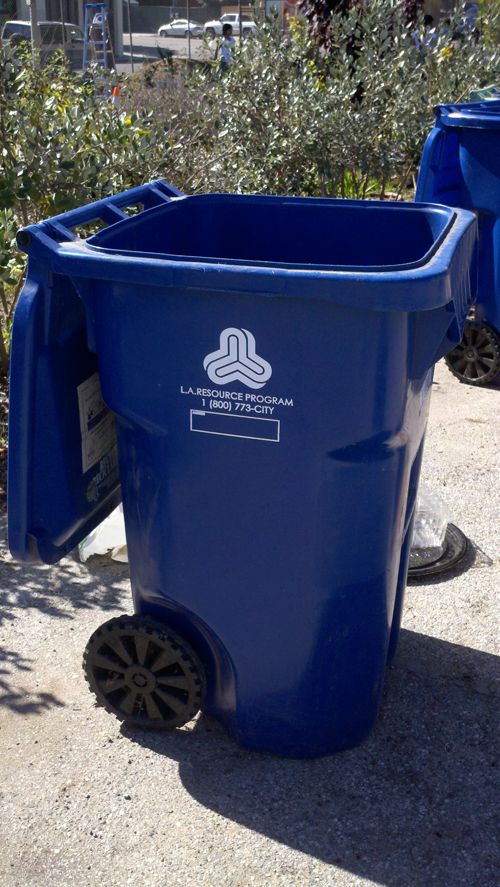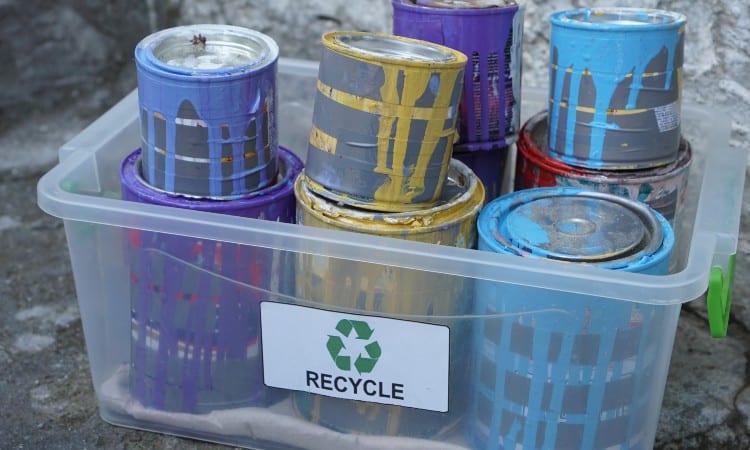How to Dispose of Acrylic Paint
Getting rid of the remaining paint might be a hassle after you’ve worked so hard and had so much pleasure creating your masterpiece. Here’s a detailed guide if you’re looking for a simple way to get rid of your acrylic paint.
Acrylic paint may be disposed of in a variety of ways. Many local organizations and organizations would gladly accept enormous quantities of empty cans or tubs that you know you won’t be using any time soon. Acrylic paint may be easily disposed of by simply allowing it to dry and then throwing it away.
Keep reading to enlighten yourselves with the knowledge of the disposal of acrylic paint.
Acrylic Paint: Are they Hazardous and Toxic?
Acrylic paint’s safety has long been a source of controversy. The most common question you may ask yourself is, “Can acrylic paints be bad for my health?” Another question would be, “Does acrylic paint threaten the environment?”
The answer is, “It depends,” to put it lightly. Some acrylic paints contain heavy metals and other hazardous substances, which can be deadly if ingested in high amounts. Pets, wild animals, and the environment can all be harmed by these substances and humans.
Acrylic paint is classified as hazardous waste if it includes dangerous substances. It’s not something you want to throw away or wash down the drain.

Is acrylic paint safe for the environment? A more clear response is given. If they aren’t harmful, acrylic paints don’t qualify as environmentally friendly because they contain many ingredients. For this reason, the paint is non-biodegradable. checkout if you can use it on your face or not.
Can You Recycle Acrylic Paint?
Acrylic paint, which is non-toxic and biodegradable, may be recycled. When you take it to a recycling centre, they’ll screen and filter the paint once it’s been checked against quality requirements. A new batch of paint will be created by mixing it with old paint of a similar hue and composition.
Generally, paint can’t be recycled at all recycling locations. Non-toxic acrylic paint recycling drop-off alternatives may be available at your local facility; be sure to inquire.
Alternatively, if you’re looking for a way to recycle your acrylic paint, consider giving it to a worthy cause. You may contribute it to a local Habitat for Humanity shop, an art or drama programme at your local school, or a local theatre company, for example.
Local recycling facilities may accept acrylic paint and set it away for further processing. In this way, it may be made available to those in need.
How to Properly Dispose of Acrylic Paint?
Acrylic paint can be disposed of in two ways, depending on whether or not it is harmful. Each individual is summarised below.
Disposal of Non-Toxic Acrylic Paint
- Open Paint Cans to Allow Paint to Dry
It is not a good idea to get rid of acrylic paint while it is still in a liquid state since it might be hazardous. Paint could get all over if you do that, so be careful. Even if the paint isn’t toxic, it still has the potential to impact the local ecosystem and the creatures in the area.
Keep any paint left in a location with enough ventilation, as this will preserve the quality of the paint. Remove the lids and wait for the paint to dry before using it completely.

If you have a significant amount of unused paint, you may thicken it using paint hardener or cat litter. The removal of the liquid is hastened by the cat litter, which acts as a magnet for the liquid. The paint hardener achieves the same result: drying off the paint and rendering it appropriate for disposal in the trash can.
- Make sure the containers are not resealed
It is essential to wait until the paint has completely dried before replacing the lid on the container. You may recycle it separately if it is made of recyclable material, or you can remove the cover and recycle it.
- Dispose of It in the Trash
After the paint has had enough time to dry, the container can be thrown away in the garbage or taken to the landfill in your area. Some people who collect rubbish won’t pick up old paint off the curb because they consider it hazardous. If that’s the case, your only choice will be to take it to the dump in your area.
you can also paint your trash can with acrylic paints to use the leftover paint in useful manner to reduce wastage.

Disposal of Toxic Acrylic Paint
- Ensure the Container is tightly packed
Before transporting hazardous acrylic paint, check to see that the lids of the containers have been properly attached. It’s always a good idea to double-check, especially if you’re worried about accidents like spills or leaks.
- Take the Paint to a Hazardous Waste Facility.
After the lids have been closed and secured appropriately, the paint can be transported to a hazardous waste site in your area. The nearby landfill is frequently used as a drop-off facility for items. You need to search the internet to find out where you need to go.
However, these are separated in certain quickly search wait for an event in your region when hazardous garbage can be dropped off. Several municipalities host these activities annually, making it simpler for locals to get rid of potentially dangerous items securely to the natural environment.
- Don’t Keep Secrets About What’s in the Can.
When you arrive at the facility for hazardous waste, you are obligated to provide an accurate description of the contents of the containers. Mentioning that the containers contain potentially hazardous materials will help ensure that they are dealt with appropriately once they have been sent out.
Can Acrylic Paint Brushes be washed in the Sink?
Even the brush residue from hazardous acrylic paint should never be washed down the sink. The environment is polluted as a result of these unwelcome additions.
Acrylic paint brushes may be washed in the sink. However, it’s not recommended. In addition to clogging pipes, paint can harm your home’s plumbing and the city’s wastewater system.
Instead, wipe off as much paint as possible before cleaning your brushes. Use an old rag, newspaper scraps, or an extra canvas if you have them on hand. Then, when it’s time to get rid of them, you may do so based on the toxics of the paint. It’s best to wait until it’s scorched before throwing it out if it is non-toxic. Bring it to a hazardous waste center if it’s dangerous.

Rinse the brushes in a separate water container once you’ve removed all the excess paint. After cleaning your brushes, cover them with a fine-mesh wire cover. A well-ventilated area away from humans and dogs is the best location for the container. Let the paint residue dry, and the water evaporates. Depending on the toxicity of the dried paint, remove it from the container and properly dispose of it.
Acrylic Paint Water Disposal: What to Do With It?
Don’t pour acrylic paint water down the drain or onto the ground if you have a container full. Residue from toxic acrylic paints is hazardous waste and should be disposed of under dangerous waste regulations. It’s a bad idea to dump paint down the drain or into the ground, even if it’s non-toxic because it can cause pipes to burst and make nearby plants and animals sick. you need to read this post to know weather you can use it on skin or not.
Cover the container with a wire mesh cover instead. Place the container in a secure and well-ventilated location. Take time for the paint residue to dry and the water to evaporate.
The dried paint should be removed and disposed of appropriately. Bring it to the hazardous waste facility if it is poisonous. Throw it away if it’s non-toxic.

Can Acrylic Paint Bottles be Recycled?
Acrylic paint bottles can be recycled if they are produced from a material that can be recycled. Check the container’s serial number to see if your local recycling facility accepts the bottle material.
The bottle must be cleaned before recycling to get the most bang for your buck. You may wish to wait for the paint to dry before using it. As a result, scraping it out of the container may be an option for you. Alternatively, fill a container with water and wash it there rather than in the sink. In that manner, the acrylic paint water may be disposed of correctly.
- Empty paint cans can be thrown away.
- Empty paint cans are acceptable in the trash. Recyclable aluminium cans are those that have been thoroughly cleaned.
- There is, however, a catch: If the paint was poisonous, you can’t just toss it away. Because of the potential for hazardous waste contamination, this paint must be treated with care.
- For non-toxic paint, ensure that any residue has thoroughly dried before proceeding. After then, it’s time to throw it away.

Is Acrylic Paint Safe to Dispose of in the drain?
It’s generally a bad idea to flush acrylic paint down the drain. When you use toxic acrylic paints, you’re contaminating your local water source. When disposing of them, regard them as hazardous trash and do not flush them down the drain.
In general, acrylic paint should be disposed of in solid rather than liquid form. Here are a few ideas to help you get rid of your acrylic paints:
- Store any leftovers in sealed containers.
- Use just what you need. Wait until the extra paint has dried before disposing it in the trash rather than flushing it down the drain.
- Before washing, remove excess paint from brushes by pressing them into an old rag or newspaper. This will extend the life of your rinse water.
- Alternatively, you might set aside a scrap piece of canvas just for this use. You’ll have a work of art that changes your moods and experiences.
- It is best to keep a 5-gallon bucket or similar open container where you may discard your filthy water. Keep children and dogs away from the bucket by covering it with a wire cover and allowing the paint to dry.
- Keep a series of buckets running if you have the space. Remove the cleaner water from the top of the most full one. You may use a new bucket to collect your most recent filthy water.
- Strain out as much as possible before dumping the water if it can’t dry out. Line a bucket with pantyhose and fill it with clean water. To get the filtered water into the bucket, make holes in the bucket.
- Use extreme caution while dealing with and disposing of poisonous pigments. Don’t flush them in the drain.
Conclusion
Now that you know how to dispose of acrylic paint correctly, you’re no longer in the dark. Yes, it does require some work to dispose of acrylic paint properly. As a result, you’re protecting yourself, your family, and the environment by doing it correctly.
In addition, you don’t have to dispose of it. Instead of throwing away the rest of the paint, you might give it away so that someone else can benefit from it. Your local programme may allow you to recycle any unused paint.
FAQ for paint
-
Does acrylic paint expire?
Acrylics, like gouache, are susceptible to mould and drying out. Unlike organic materials, which can “expire,” acrylic paint has a synthetic foundation and will not degrade over time. When it comes to materials that dry up quickly, acrylics have a reputation for being the worst offenders.
-
After opening, how long does acrylic paint last?
It can last anywhere from 5 to 10 years after opening, depending on the quality and storage conditions of the paints.
-
Is it possible for acrylic paint to dry out of the tube it comes in?
It might be challenging to use when acrylic paint dries or separates in the tube. However, the acrylics might still be salvageable despite this defect. Acrylic paint can be affected by temperature fluctuations, but mould development renders acrylic paint useless. curious about drying after painting then read post on baking acrylic paint for faster drying in oven.
-
Is acrylic paint susceptible to mould growth?
Acrylic paint may go bad, as many people have discovered. Mould, mildew, and bacteria can grow on acrylic paint because it is vulnerable to water damage. Acrylic paint can also dry out or split due to the surrounding environment.

Being associated with art and craft field since decades as a hobbyist and life long learner has given me an opportunity to learn many new things related to art, craft, paints and pottery which i am trying to share with your guys on this website. I have expertise of being professional painter and potter for the last 20+ years
I have learned mind blowing cool tips and insights which makes me a person with ability to improvise and come up with creative ideas and solutions to make stunning and impeccable art pieces of all types which are adored by people across the globe on this website and other platform.


